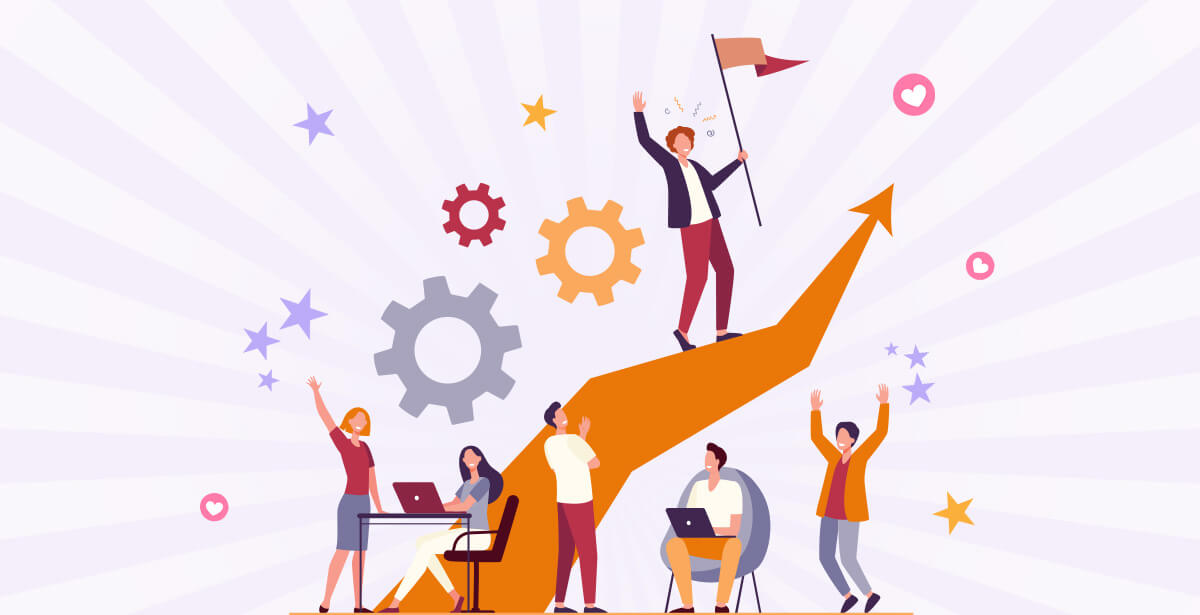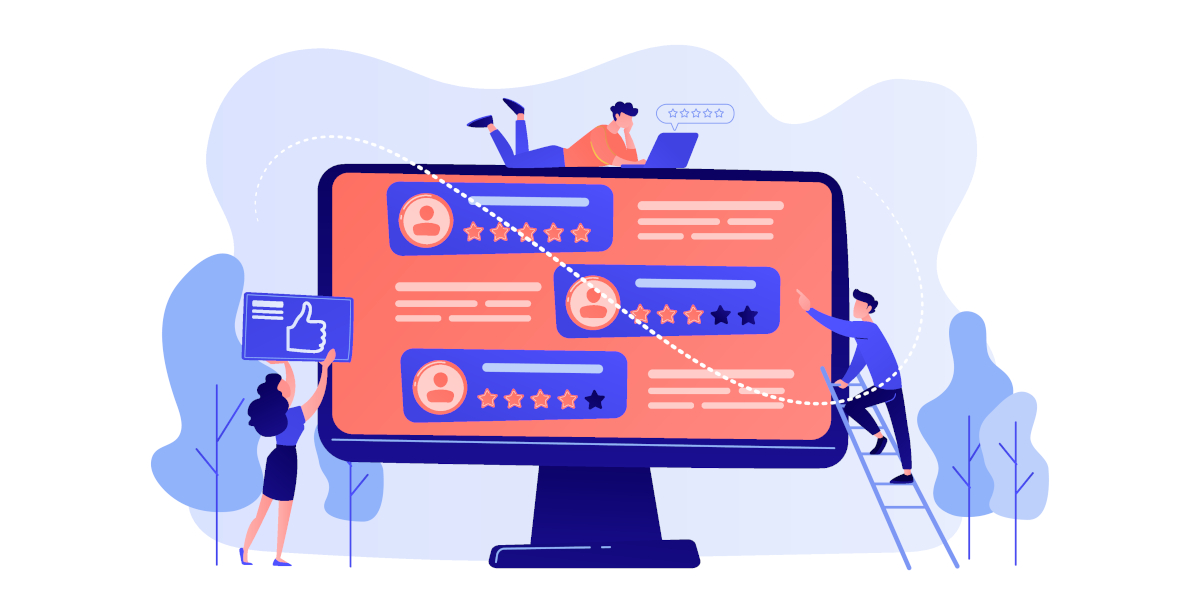With the new year on the horizon, are you cooking up employee growth and development ideas yet? If not, you should be.
The Great Resignation brought employee dissatisfaction to the fore, but many employers have struggled to find a solution.
The truth is, employees are increasingly looking for meaning and purpose in their work. They seek opportunities to learn, grow, and achieve personal goals – and they seek an environment that provides those opportunities.
What is Employee Growth and Development?
Employee development refers to your workers’ learning journey as they build new skills and diversify their experiences. It’s more than just training – it’s how your employees work toward the role they envision for themselves at your company.
With the right opportunities, employees can develop professional competencies, adapt to new tech and tools, and overcome more challenges. The resulting performance boost is a win-win for everyone.
But learning doesn’t stop at skills specific to your employees’ current or aspirational roles. Soft skills like communication, problem-solving, and self-motivation are an asset to any task, setting up your employees for long-term success.
Why is Employee Growth and Development Important?
Employee development pathways allow workers to reach their full potential, and by and large, employees want that professional momentum.
You’d think businesses would leap at the chance to upskill their workforce. But 74% of workers feel that they’re held back by a lack of employee opportunities for growth in their workplace.
Investing in your employees’ development will give you the edge in these four major areas –
Training Future Managers
You don’t need to win your next generation of leaders in the rat race of today’s job market. Building leadership pathways within your organization offers unique benefits that may even outweigh recruitment, as it –
- Provides upward trajectory for your employees, driving them to work harder and better
- Promotes individuals who already know and understand your team
- Allows you to develop your leaders around company values, practices, and processes
Increasing Employee Engagement
Employee growth is one of the key drivers of employee engagement in your workforce. It only makes sense – nobody is content when they feel like their career is going nowhere.
On the other hand, employees are more engaged by work that pushes them to adapt and evolve. The more supported and valued they feel, the more motivated they are to innovate, collaborate, and take initiative.
Attracting Top Talent
It should come as no surprise that job-seekers want to join a company that values their growth. If you don’t advertise that yours will do just that, you’re losing out on the best talent in the market.
Clear employee development pathways let prospective hires know whether your company will help them achieve their dream role. Unless they see a bright future with you, they’ll look elsewhere.
Reducing Turnover
Like many employers after the Great Resignation, you’re probably looking for ways to keep your employees happy where they are.
People stay longer at companies that prioritize employee development, according to LinkedIn’s 2019 Workplace Learning Report. With lower turnover, you’ll spend less on recruitment. So, capitalizing on this secret to retention will help you save money in the long run.
7 Ways to Boost Employee Growth and Development
Now to get to the crux of the issue: coming up with employee growth and development ideas.
While there’s no one-size-fits-all solution, mixing and tailoring a few different methods is a great place to start. Collect regular feedback to keep your finger on the pulse of your employees’ engagement and adjust as you go.
These seven tried-and-true strategies are guaranteed to produce results.
1) Offer Training Opportunities
It goes without saying that employees can’t develop without avenues for learning.
Training programs are a staple of a successful learning culture, expanding your employees’ specializations. They open doors to new tasks and roles that demand different capabilities.
As your employees build more skills, their independence and value within your organization rise. Even soft skills training can return up to 250% on investment within a year.
2) Start a Mentoring Program
Mentoring programs are among the easiest and most cost-effective employee growth and development ideas to implement. New hires can take advantage of experienced employees’ expertise right off the bat with in-depth learning.
There’s essential teamwork involved: the mentor becomes a better teacher, and the mentee becomes a better learner. It’s a great way to foster mutual understanding between different generations of workers.
3) Support Horizontal Movement
Upward isn’t the only way forward. You can support your employees’ career growth by allowing them to move into lateral roles as well.
With this approach, you can keep employees who outgrow their current role but don’t want to move into management. A new direction may be a better fit for their developmental goals.
Horizontal movement is especially beneficial for future managers. Through hands-on experience, employees can learn how different roles work together to contribute to the company’s goals.
4) Help with Career Planning
All employee growth and development ideas fall flat if your employees don’t know what they’re working toward.
Dedicate annual one-on-one meetings to employee career path planning. Lay out what milestones they’re trying to hit and what experiences are necessary for the next step in their career.
The freedom to dictate your own vision of success is a powerful motivating force. Show employees how their self-made goals align with your company’s goals, and they’ll feel that their role empowers them.
5) Provide Continuous Feedback
Feedback is the vehicle for growth, both personal and professional. A system of regular, continuous feedback ensures your employees are always improving and moving toward their development goals.
But the key is to keep feedback specific, constructive, and actionable. Meaningful performance insights are a valuable tool for building upon strengths and weaknesses and preparing for future tasks.
6) Hold Regular Workshops
A cost-effective idea for distributing expertise throughout your company is to have your employees teach each other. Volunteer-run workshops and seminars keep the knowledge mill churning.
The facilitator gets to pick the topic, play around with the execution, and develop valuable communication skills to boot. But if that’s not enough incentive, you can sweeten the deal with a small reward or a lesson-ranking system.
7) Gamify Development
People are naturally motivated by competition, gratification, and challenge. You can take advantage of that by turning employee growth and development into a game.
The gamification strategy uses point-based systems, leaderboards, and real rewards to make professional development fun. They provide a massive boost not only to engagement but also to knowledge retention, improving overall performance.
If done right, gamification can even make learning addictive. Your employees won’t want to stop!
It’s Time to Prioritize Employee Growth
But don’t be daunted by the number of options at your disposal. If you want to take the fastest route to an effective development strategy, offload some of the busywork to software.
With integrated engagement and productivity tools, nGAGE can give your company a solid foundation for employee growth.
- Introduce gamification to your workplace with nGAGE’s challenges and rewards program.
- Implement a feedback quota and use easy templates to make feedback a regular professional habit.
- Track employee attendance productivity so you can help out where needed and give recognition where it’s due.
Try out nGAGE today and make 2025 your best year for employee growth and development.

